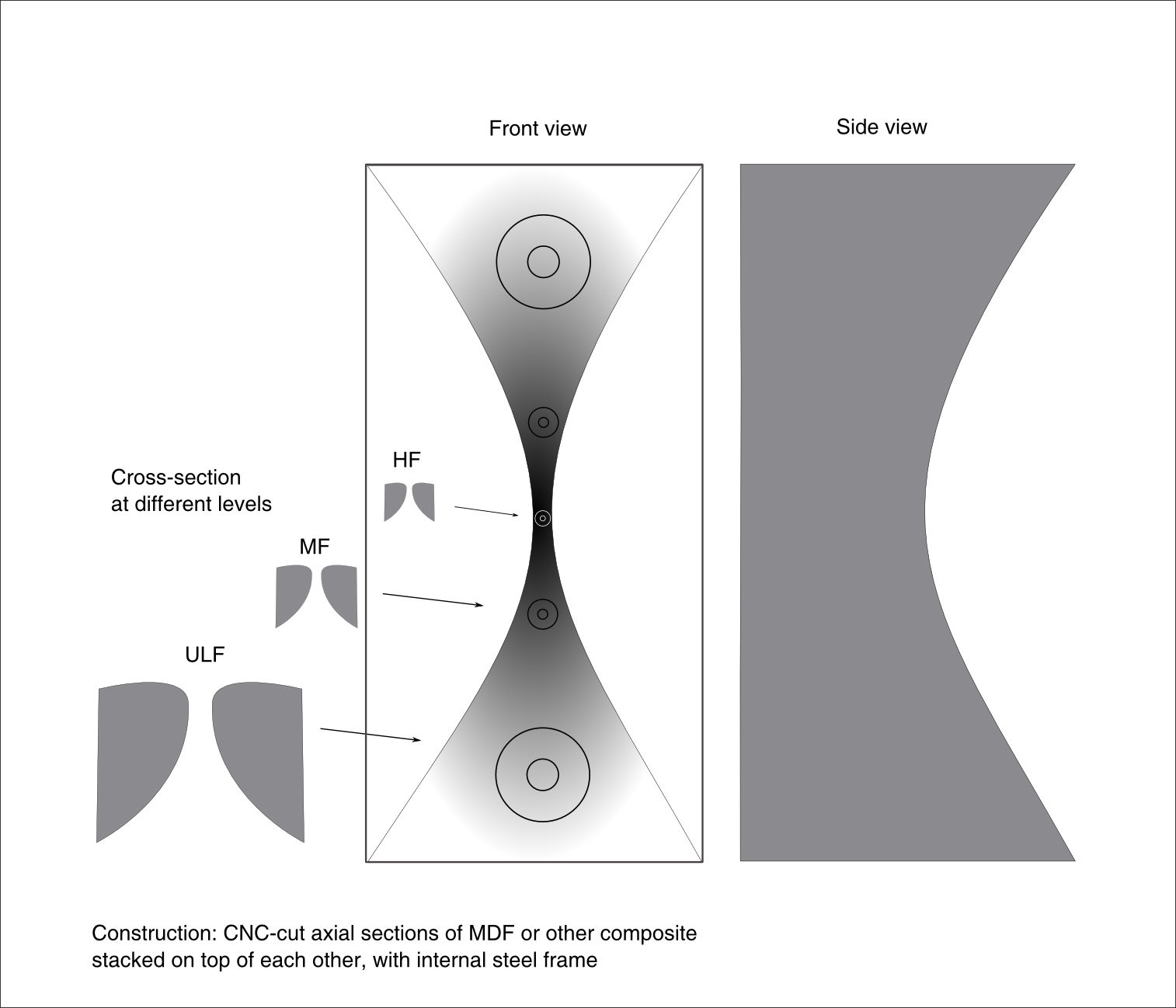Rerurn to Romy the Cat's Site
In the Forum: Horn-Loaded Speakers
In the Thread: The absolutely “best” material for horns construction.
Post Subject: Just a variation of the unity hornPosted by JLH on: 8/16/2009
fiogf49gjkf0d
 decoud wrote: decoud wrote: |
One of the problems with horns is the inflexibility of frequency cut-off: you are limited to a discrete number equal to the number of horns you have. This makes experimentation difficult without having an absurdly large array of different horn sizes to try. So how about the following configuration:

The entire loudspeaker is a single profile that changes continuously in cross section from floor to ceiling with high frequencies being in the centre and low at the extremes. Any cut-off frequency is therefore always available (in two positions): it is simply a matter of driver positioning. Equally, the only limit on the number of "horns" is the number of drivers. Removable horizontal septations can be introduced if necessary but it would be nice to do without them.
Once the optimal profile is determined the thing would be trivial to build: it could be just a series of CNC'd slabs of mdf stacked on top of each other.
Rgds, d
|
|
What you have there is Tom Danley's Unity Summation device in principle. Tom has a predictable method that limits the trial and error approach. It would be very difficult to get the frequency response flat for your example. The distance between the drivers is too great and will result in a lot of phase and timing problems.

Rerurn to Romy the Cat's Site